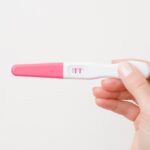The Dutch findings underscore advice that women should avoid alcohol altogether in the antenatal period.
Having as little as one alcoholic drink a week during pregnancy has been linked to changes in the facial shape of children, according to new research.
Dutch researchers said they found an association between alcohol intake and children’s face shape at a much lower level of exposure than found in previous studies.
The study, published in Human Reproduction involved the analysis of 3D facial images of 3000 children at ages nine and 13, looking at 200 different facial traits and comparing this with the mothers’ self-reported alcohol consumption during pregnancy and three months before conception.
The study found that compared to children whose mothers drank no alcohol before or during pregnancy, children of mothers who did consume alcohol were more likely to have facial changes such as turned up nose tip, shortened nose, turned-out chin and turned-in lower eyelid areas at age nine.
Interestingly, by age 13 these facial differences decreased.
After adjusting for other factors including maternal age, ethnicity, smoking during pregnancy and the child’s BMI, they found the association between children’s face shape and alcohol was strongest in women who drank in the first trimester.
“We found that even if mothers drank very little (<12g per week) during pregnancy, the association between prenatal alcohol exposure and children’s facial shape could be observed.”
“Our study suggests that women who are pregnant or want to become pregnant soon should quit alcohol consumption several months before conception and completely during pregnancy to avoid adverse health outcomes in the offspring,” the authors wrote in Human Reproduction.
Commenting on the study, Professor Elizabeth Elliott, professor of paediatrics and child health at the University of Sydney and the Children’s Hospital at Westmead, said it reinforced the NHMRC’s recommendation that the safest choice for anyone trying to get pregnant was to avoid alcohol.
She said the decrease in differences in the facial features at age 13 could be partly due to hormonal changes.
“That’s not surprising because at 13, puberty is kicking in for most kids and there are hormonal and other influences on facial development,” said Professor Elliott, who is also co-author of the Australian Guide to the Diagnosis of FASD.
While the study adds to the body of evidence that it’s safest not to drink during pregnancy, some women may need support to drop drinking, she said.
“GPs can often recognise the women who have problem drinking and treating them in a compassionate way, making sure they have contraception and that they’re getting some help from alcohol and drugs specialists to try to minimise any potential for harm”, Professor Elliott added.
The research also highlighted the importance of GPs providing contraception advice for women who were not planning to conceive, as well as pre-pregnancy advice for women planning to have a baby.
“Pre-pregnancy planning and advice is really important. We don’t want to alarm women who had a couple of drinks in pregnancy, but we do want to stop people drinking regularly and drinking in large amounts.
“GPs need to know their population of women of childbearing age, and if women have a drinking problem to get them help before they get pregnant.
“Reinforcing this as a public health message is really important.”
Professor Elliott said GPs may be concerned about discussing alcohol with pregnant women, but their surveys had found that pregnant women want information about drinking in pregnancy.
“They say they want to know that it could cause harm because they don’t want to harm their baby. They’re happy to be asked and advised.”





